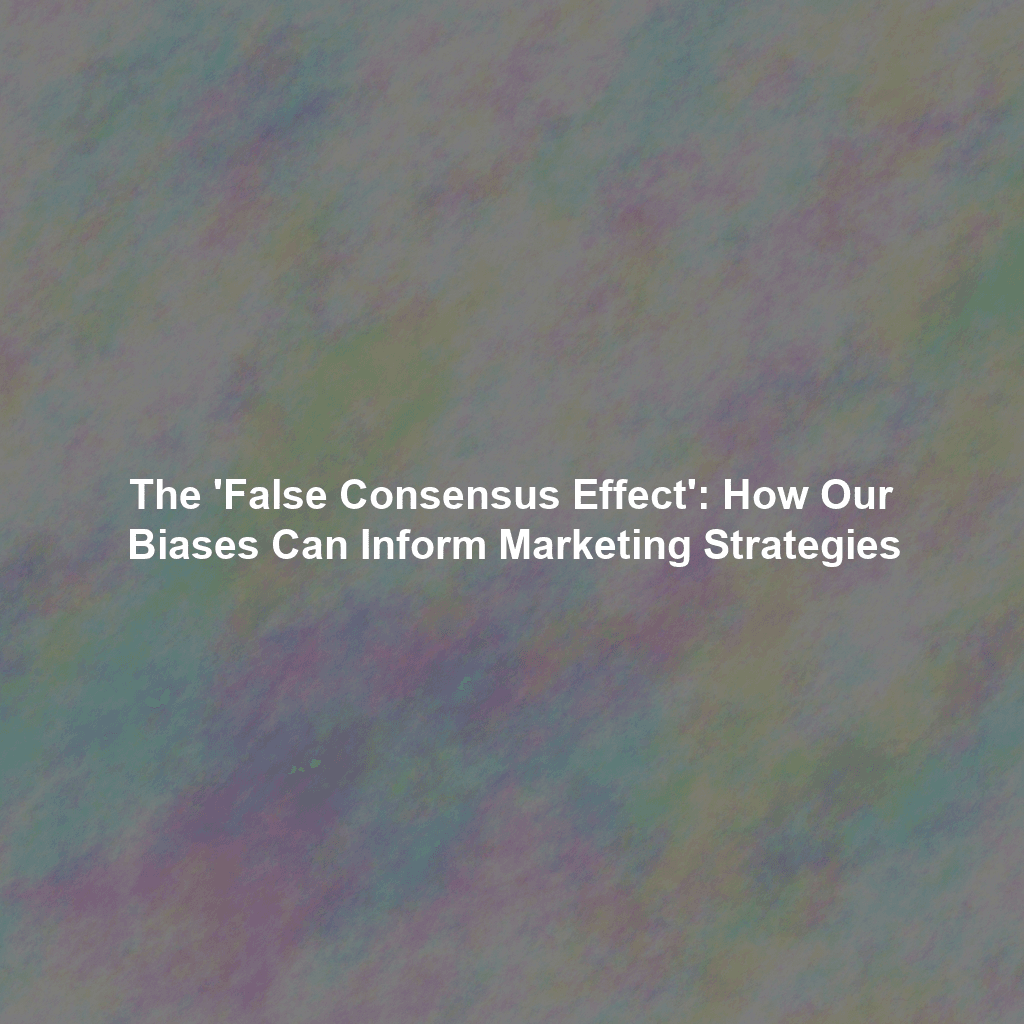We all think we’re a little more normal than we actually are, right? We assume our preferences, beliefs, and behaviors are shared by a significant chunk of the population. This tendency, known as the ‘false consensus effect,’ can be a powerful – and surprisingly weird – tool in your marketing arsenal. Forget shouting your message from the rooftops; understanding this bias allows you to whisper directly into the ears of your target audience, making them feel understood and, ultimately, driving conversions.
What Exactly is the False Consensus Effect?
Simply put, the false consensus effect is a cognitive bias where we overestimate the extent to which others share our beliefs, attitudes, values, and behaviors. We tend to think that the way we see the world is the “normal” way, and those who disagree are somehow… well, wrong. It’s like thinking everyone loves pineapple on pizza (even though we all know that’s a societal anomaly!).
Why Does This Happen?
Several factors contribute to this bias:
- Availability Heuristic: We rely on easily accessible information, often our own experiences and those of people we know. This creates a skewed perception of broader opinions.
- Selective Exposure: We tend to surround ourselves with people who share similar views, reinforcing our belief that those views are widely held. Think about your social media feed – it’s often an echo chamber of your own opinions.
- Self-Esteem Maintenance: Believing that others agree with us boosts our self-esteem and validates our choices. It’s comforting to know we’re not alone.
- Ambiguity: The more ambiguous a situation or question is, the more likely we are to project our own beliefs onto others.
Leveraging the False Consensus Effect in Marketing: Weird but Effective
So, how can you use this inherent bias to your advantage? Here are a few weird marketing tricks that capitalize on the false consensus effect:
1. “Most People Experience This…” Content
Craft content that starts with a statement implying widespread agreement or experience. For example:
- “Most people struggling with productivity…”
- “If you’re like most of our customers who feel overwhelmed…”
- “Do you find yourself often…”
This instantly creates a sense of relatability. People think, “Hey, that’s me!” They’re more likely to pay attention because they feel understood and validated.
2. Polls and Surveys: Making Them Part of the “In-Group”
Use polls and surveys that subtly suggest a desired answer is the popular one. Frame the questions in a way that hints at the majority opinion. For example, instead of “Do you prefer product A or product B?”, try “Many people find product A more efficient. Do you agree?”
While ethical considerations are paramount, subtly influencing the framing can encourage participation and reinforce the idea that a particular preference is the norm. Use the results of these (carefully crafted) polls in your marketing materials: “70% of our users agree…”.
3. User-Generated Content (UGC): Amplifying Shared Experiences
Showcase UGC that reflects common pain points, desires, or experiences related to your product or service. By highlighting real people expressing similar feelings, you tap into the false consensus effect. People think, “If they feel this way, and they love this product, maybe I will too!”
For example, if you’re selling a time management app, feature testimonials from users who say things like, “I used to struggle with deadlines, but now…” or “I always felt overwhelmed, but this app helped me…”.
4. Creating a “Movement” or “Community”
Position your brand as part of a larger movement or community that shares specific values or beliefs. This creates a sense of belonging and reinforces the idea that your target audience’s views are widely shared within that group. Think of brands that champion sustainability, ethical sourcing, or specific lifestyles. By associating yourself with these values, you attract people who already believe in them and strengthen their conviction that they’re part of a larger, like-minded group.
5. Addressing Objections Head-On: “We Know What You’re Thinking…”
Acknowledge common objections or concerns that your target audience might have. By directly addressing these concerns, you show empathy and demonstrate that you understand their perspective. For example, “We know you might be skeptical about X, but here’s why it works…” This validates their initial hesitations and makes them more receptive to your message.
Ethical Considerations: Walking the Line
It’s crucial to use the false consensus effect ethically. Avoid manipulating or deceiving your audience. Focus on highlighting genuine common ground and building authentic connections. Transparency and honesty are key to long-term success.
Instead of falsely claiming widespread agreement, use data and insights to understand your target audience’s actual beliefs and tailor your messaging accordingly. Strive to build a genuine community, not a manufactured consensus.
Conclusion: A Psychological Edge
The false consensus effect is a powerful psychological bias that can be a surprisingly effective marketing tool. By understanding how people tend to overestimate the extent to which others share their views, you can craft more relatable content, build stronger connections with your target audience, and ultimately drive growth. Just remember to use this knowledge responsibly and ethically. Happy growth hacking!
 Skip to content
Skip to content

